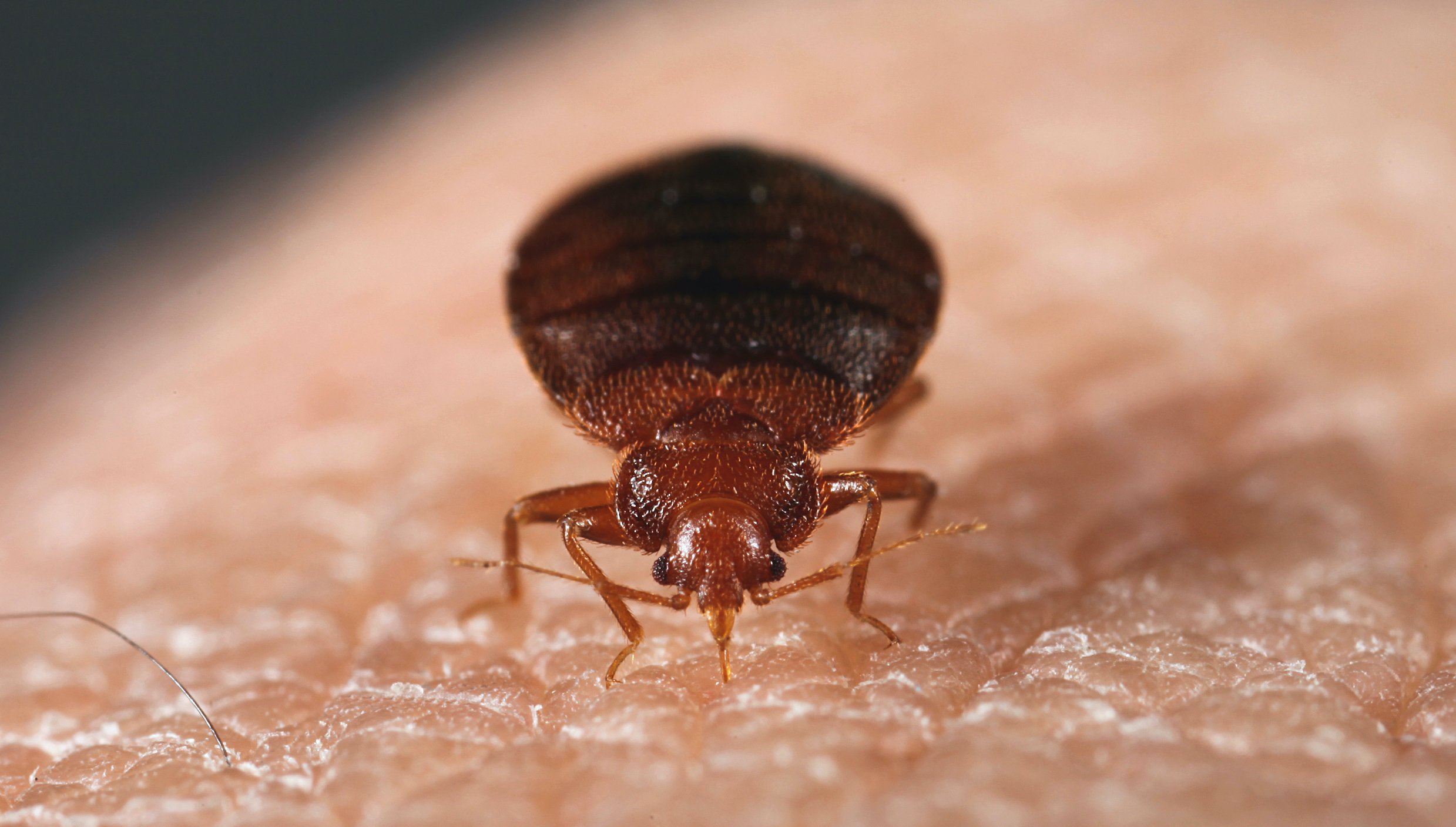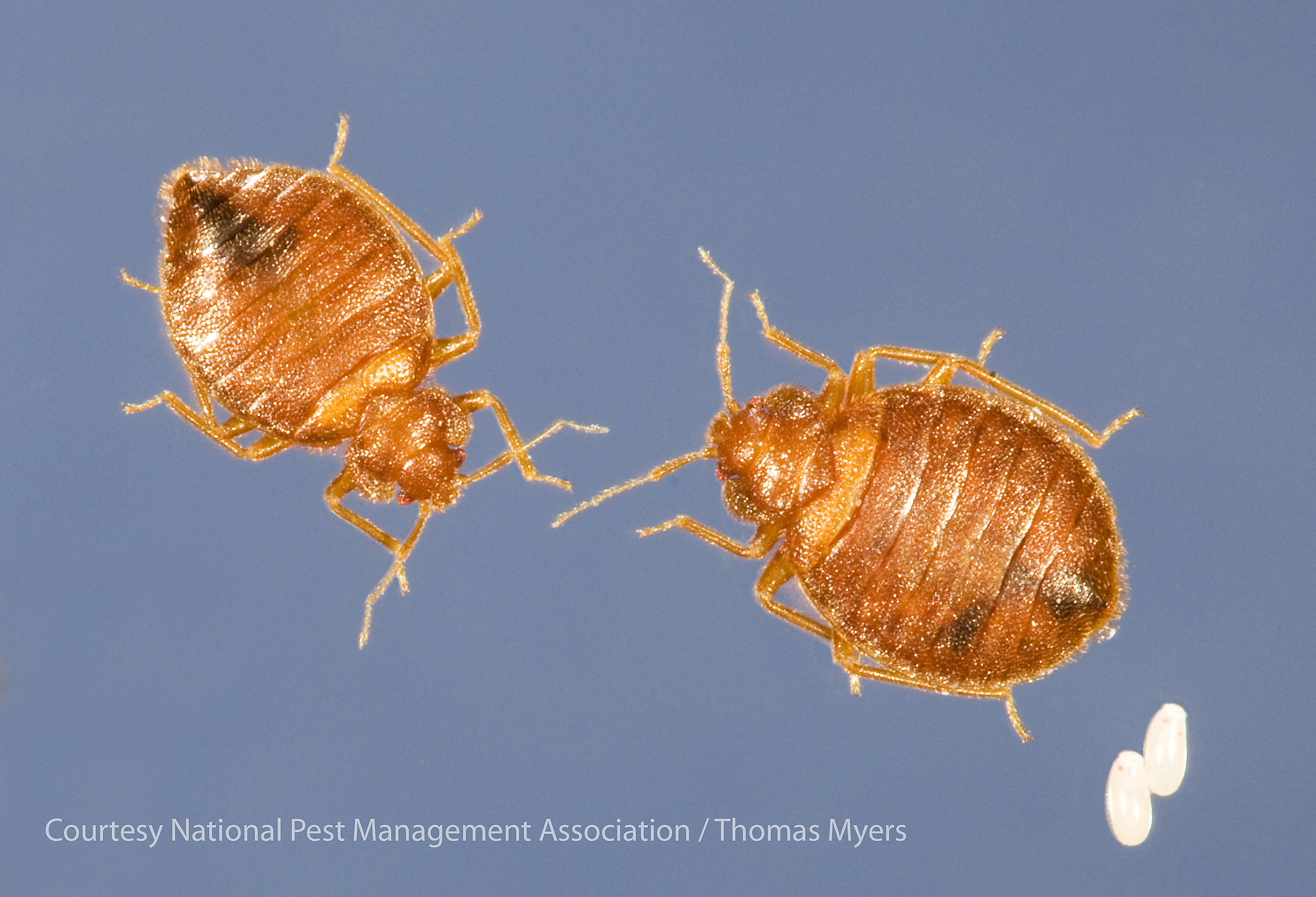Bed Bug Facts & Statistics
Read our Bugs Without Borders Survey below for more bed bug statistics.
The following bed bug facts and statistics are compiled from the 2018 Bugs Without Borders survey conducted by the National Pest Management Association:
- Almost all (97 percent) pest professionals have treated bed bugs in the past year. A majority of them say that overall bed bug service work (69 percent) and the prevalence of these pests (66 percent) are increasing.
- Bed bugs may be easily confused with other pests, as 84 percent of pest control professionals were initially contacted about a different type of pest before identifying them as bed bugs. The majority of these contacts (71 percent) were about fleas, followed by cockroaches (28 percent).
- More than half of pest control professionals noted that they receive the most bed bug complaints during the summer, as increased travel during this time of the year may help spread bed bugs from vacation destinations to homes or even college lodgings to homes as students go on summer break.
- The top three places where pest professionals report finding bed bugs are single-family homes (91 percent), apartments/condominiums (89 percent), and hotels/motels (68 percent). Past bed bug statistics have shown these environments to consistently be the top three where bed bugs have been encountered.
- Bed bugs are also found seemingly everywhere else and in higher numbers, such as nursing homes (59 percent), schools and daycare centers (47 percent), offices (46 percent), college dorms (45 percent), hospitals (36 percent) and public transportation (19 percent).
- Bites are the most commonly reported sign of an infestation (92 percent) and more than half of people reach out for treatment after discovering bites and welts on their bodies. Although some people immediately develop a skin reaction to bites, others may take two to three days before showing obvious symptoms or any symptoms at all, meaning that people could be unaware of a bed bug problem until a full-blown infestation has taken root.
- Typically found in couches and bed frames, bed bugs can also be found in some of the most unexpected places, including stuffed animals, wheelchairs, airplanes, school buses, purses and even inside bedside lamps.
Previous Bed Bugs in America Survey
The following bed bug statistics and facts are compiled from the NPMA's 2011 Bed Bugs in America Survey:
- One out of five Americans has had a bed bug infestation in their home or knows someone who has encountered bed bugs at home or in a hotel
- Americans who have encountered bed bugs tend to be younger, live in urban areas and rent their homes. The incidence of bed bugs is three times higher in urban areas than in rural areas due to factors such as larger population size, apartment living and increased mobility, which are conducive to the rapid spread and breeding of bed bugs.
- Bed bugs are found in all 50 states. Specifically, the pests were encountered by 17 percent of respondents in the Northeast; 20 percent in the Midwest; 20 percent in the South; and 19 percent in the West.
- Most Americans are concerned about bed bugs and believe that infestations in the United States are increasing. Nearly 80 percent are most concerned about encountering bed bugs at hotels; 52 percent on public transportation; 49 percent in movie theaters; 44 percent in retail stores; 40 percent in medical facilities; 36 percent in their own homes; and 32 percent equally pointed to places of employment and friends' homes. The fear of getting bitten topped the list of concerns.
- As the public's awareness of the bed bug resurgence grows, many Americans are modifying their behaviors to minimize their risk of an infestation: 27 percent have inspected or washed clothing upon returning from a trip; 25 percent have checked a hotel room for bed bugs; 17 percent have inspected or vacuumed a suitcase upon returning from a trip and 12 percent have altered or canceled travel plans because of concern about bed bugs.
- Sixteen percent of survey respondents inspected second-hand furniture they have brought into their homes; 15 percent have checked dressing rooms when trying on clothing and 29 percent have washed new clothing immediately upon bringing it home from a store.
- Of the 13 percent of respondents who said they knew someone who had a bed bug infestation in their home, 40 percent said they avoided entering the infested home and 33 percent discouraged those who had the infestation from entering their own home.
- Despite the availability of information, most Americans still have misconceptions about bed bugs. Nearly half of respondents incorrectly believe that bed bugs transmit disease. However, research conducted to date has shown that bed bugs do not transmit disease to their human victims, although some people may experience itchy, red welts; 29 percent inaccurately believe bed bugs are more common among lower income households, and 37 percent believe bed bugs are attracted to dirty homes. Bed bugs do not discriminate in regard to household income and are found in both sanitary and unsanitary conditions.
Additional Bed Bug Information & Statistics

Other NPMA Bed Bug Facts:
- Bed bugs can lay one to five eggs in a day and more than 500 in a lifetime.
- Bed bugs can survive for several months without eating.
- Bed bugs can withstand a wide range of temperatures, from nearly freezing to 122 degrees Fahrenheit.
- Bed bug draw blood for about five minutes before retreating to digest.
- Bed bugs hatchlings are so small they can pass through a stitch-hole in a mattress.
- Bed bugs can ingest seven times their own weight in blood, which would be the equivalent of an average-sized male drinking 120 gallons of liquid.
- Bed bugs are found in all 50 U.S. states.




